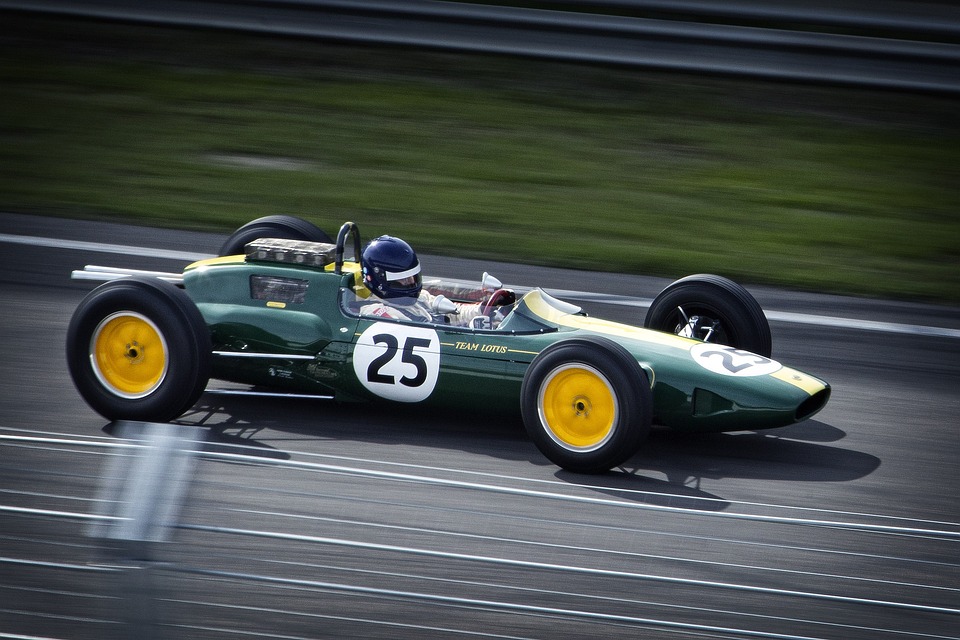Formula 1 Racing Innovations

Formula 1 racing has always been synonymous with speed, precision, and cutting-edge technology. Over the years, this exhilarating sport has witnessed numerous innovations that have not only transformed the way races are conducted but have also significantly impacted the automotive industry.
The Evolution of Aerodynamics
Aerodynamics plays a crucial role in Formula 1 racing, influencing the speed and stability of the cars as they zoom around the track. The journey of aerodynamic innovation in F1 has been nothing short of revolutionary.
Ground Effect
Developed in the late 1970s and early 1980s, the ground effect revolutionized Formula 1 car design. By creating a low-pressure area beneath the car, the ground effect generated significant downforce, allowing cars to corner at unprecedented speeds.
Although it was eventually banned due to safety concerns, the principles of ground effect continue to influence modern F1 aerodynamics.
Drag Reduction System (DRS)
Introduced in 2011, the Drag Reduction System (DRS) was designed to enhance overtaking opportunities during races. By adjusting the rear wing’s angle to reduce drag, DRS allows cars to achieve higher speeds on straights. This innovation has added a strategic dimension to racing, as drivers must carefully time their DRS usage to maximize its benefits.
Powertrain Advancements
The quest for more efficient and powerful engines has always been at the heart of Formula 1 innovation. Over the years, powertrain technology has undergone significant transformations, pushing the boundaries of performance and sustainability.
Turbocharging
Turbocharged engines made their mark in F1 during the 1980s, providing a substantial boost in power compared to naturally aspirated engines. By compressing the air entering the engine, turbochargers increased the engine’s efficiency and output, leading to faster lap times. Today, turbocharging remains a key component of F1 power units.
Hybrid Power Units
In 2014, Formula 1 introduced hybrid power units, combining traditional internal combustion engines with electric motors. These power units are not only more efficient but also environmentally friendlier, aligning with the global push for sustainability. The energy recovery systems used in these hybrids have set new standards for fuel efficiency and performance in motorsport.
Safety Innovations
Safety has always been a top priority in Formula 1 racing. Over the years, numerous innovations have been implemented to protect drivers and reduce the risk of accidents.
Halo Device
Introduced in 2018, the halo device is a titanium structure that protects drivers’ heads from debris and impacts. Despite initial resistance due to aesthetic concerns, the halo has proven its worth in multiple incidents, saving lives and becoming an integral part of F1 safety standards.
Advanced Crash Structures
Modern F1 cars are equipped with highly advanced crash structures designed to absorb and dissipate energy during collisions. These structures, often made from carbon fiber composites, are rigorously tested to ensure they provide maximum protection to drivers in the event of an accident.
Data and Connectivity
The digital revolution has not spared Formula 1, with data and connectivity playing an increasingly vital role in the sport. Teams rely on real-time data analysis to optimize performance and make strategic decisions during races.
Telemetry Systems
Telemetry systems allow teams to collect and analyze vast amounts of data from their cars in real-time. This data includes information about the car’s speed, engine performance, tire condition, and more. By analyzing this data, teams can make informed decisions about race strategy, pit stops, and car setup.
Simulators and Virtual Testing
Simulators have become an essential tool for F1 teams, allowing drivers to practice on virtual tracks and engineers to test new setups without the need for physical testing. This technology not only saves time and resources but also enables teams to experiment with different strategies and configurations in a risk-free environment.
The Future of Formula 1 Innovations
As technology continues to advance, the future of Formula 1 promises even more exciting innovations. From further advancements in electric powertrains to the integration of artificial intelligence, the possibilities are endless.
These innovations will not only enhance the spectacle of F1 racing but also contribute to the development of sustainable and efficient automotive technologies.
Conclusion
Formula 1 racing is a testament to human ingenuity and the relentless pursuit of excellence. The innovations born in this high-octane environment have far-reaching impacts, influencing industries beyond motorsport.
As we look to the future, the pioneering spirit of Formula 1 will undoubtedly continue to shape the world of racing and automotive technology for generations to come.






